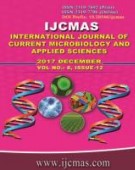


 National Academy of Agricultural Sciences (NAAS)
National Academy of Agricultural Sciences (NAAS)

|
PRINT ISSN : 2319-7692
Online ISSN : 2319-7706 Issues : 12 per year Publisher : Excellent Publishers Email : editorijcmas@gmail.com / submit@ijcmas.com Editor-in-chief: Dr.M.Prakash Index Copernicus ICV 2018: 95.39 NAAS RATING 2020: 5.38 |
Soil tillage is one of the most important operations in the crop production system and consumes a large amount of energy and time than any other operation. The cost, energy and time requirement during the tillage operation mainly depends on the soil condition, power source and the tool used during the operation. The cost and the timeliness of operation assume critical importance while deciding the type of tillage tools. In this paper, an attempt has been made to overview the effect of the different tillage tools on reducing the number of passes in the secondary tillage operations. The combined tillage tool with the combination of a disk harrow and a Cambridge roller has been developed in Iran. Three treatments were namely disk harrow once; disk harrow twice and combined machine were applied after moldboard ploughing. Findings showed that increasing rotational speed from 130 to 165 rpm, decreased the mean weight diameter and instability index. A methodology for the prediction of draft requirements under the combination of tillage implements in the different soil and operating conditions have also been developed. Combination tillage implement comprising cultivator and a single-acting disk harrow in sequence (C-DH) with a total cutting width of 2.1m had draft found to be within 7.4 to 11.1 kN with an associated slip of 10.5 to 22.4 %. The overall performance index was found to be higher for combination tillage implement as compared to that of individual tillage implements indicating the better efficiency of the tractor-implement combinations. It can be concluded that new combined machine would be a substitute for several disking and allows the operation to complete in one pass.
 |
 |
 |
 |
 |